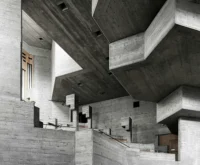- Home
- Articles
- Architectural Portfolio
- Architectral Presentation
- Inspirational Stories
- Architecture News
- Visualization
- BIM Industry
- Facade Design
- Parametric Design
- Career
- Landscape Architecture
- Construction
- Artificial Intelligence
- Sketching
- Design Softwares
- Diagrams
- Writing
- Architectural Tips
- Sustainability
- Courses
- Concept
- Technology
- History & Heritage
- Future of Architecture
- Guides & How-To
- Art & Culture
- Projects
- Interior Design
- Competitions
- Jobs
- Store
- Tools
- More
- Home
- Articles
- Architectural Portfolio
- Architectral Presentation
- Inspirational Stories
- Architecture News
- Visualization
- BIM Industry
- Facade Design
- Parametric Design
- Career
- Landscape Architecture
- Construction
- Artificial Intelligence
- Sketching
- Design Softwares
- Diagrams
- Writing
- Architectural Tips
- Sustainability
- Courses
- Concept
- Technology
- History & Heritage
- Future of Architecture
- Guides & How-To
- Art & Culture
- Projects
- Interior Design
- Competitions
- Jobs
- Store
- Tools
- More
Innovative Solutions – Key Features in Software Development for Architectural Design

The world of architecture is a tapestry of creativity and precision, with every thread woven by the dedicated hands of architects, designers, and the tools they use. As technology continues to advance at a breakneck pace, the field of architectural design is undergoing a revolution powered by innovative software development solutions. These solutions are reshaping the landscape of architectural design, offering architects a canvas that is only limited by their imagination. In this blog post, we’ll explore the key features in software development that are steering this transformative journey.
Table of Contents
ToggleUser Interface and Experience
Intuitive and User-Friendly Interface
One of the hallmarks of top-tier architectural software is an interface that is as elegant as the designs it helps create. An intuitive and user-friendly interface allows architects to express their creativity without wrestling with complex commands or navigational headaches. The focus is on a seamless experience that empowers professionals to materialize their visions efficiently.
Customizability and Flexibility for Different Design Needs
Architects often have diverse and evolving design requirements. This necessitates software solutions that can be tailored to fit the unique needs of individual projects. Embedded within this process is the imperative to hire dedicated development team, capable of crafting customizable toolbars, adaptable workflows, and flexible templates. These characteristics define innovative software, ensuring that architects can adjust their digital environment to suit each new challenge.

3D Modeling and Rendering
Advanced 3D Modeling Capabilities
The ability to craft precise and detailed 3D models is crucial in architectural design software. Advanced 3D modeling tools enable professionals to construct intricate structures from scratch, modify existing models, and explore complex geometries with ease. These capabilities allow for a comprehensive exploration of a design before any ground is broken.
High-Quality Rendering and Visualization Tools
A picture speaks a thousand words, especially when it comes to presenting architectural concepts. State-of-the-art rendering tools bring these models to life, showcasing them with realistic materials, lighting, and textures. High-quality visualizations not only help clients understand the vision behind a design but also play a crucial role in the decision-making process.
Collaboration and Integration
Support for Collaboration Among Design Team Members
Architecture is seldom a solo venture; it is a symphonic collaboration that benefits from the input of a diverse team. Software development for architectural design increasingly focuses on tools that support teamwork, allowing multiple users to work on a project concurrently. Cloud-based platforms, shared libraries, and synchronized changes are facilitators of this collaborative spirit.
Integration with Other Software and Tools Used in Architectural Design
No piece of software is an island. Architectural design often involves an ecosystem of different tools and services. Modern software embraces this reality through integration capabilities, connecting with other applications for activities like structural analysis, project management, and environmental impact studies. This interconnectedness ensures a smooth transition between various phases of the design process.Automation and Efficiency
Automation of Repetitive Tasks
Repetition is a productivity killer in any sector. In architectural design, where every moment counts, the automation of mundane tasks is a feature of software that can unlock new horizons of efficiency. Whether it’s auto-generating reports, managing documentation, or applying standard codes, automated features save precious time for architects to engage in more creative endeavors.
Optimization for Efficiency in Design Processes
Time is the currency of project delivery, and in architecture, deadlines can be tight. Software that optimizes the efficiency of design processes—through faster rendering times, streamlined data management, or enhanced error detection—essentially acts as a multiplier for time, affording architects the luxury of refinement without the pressure of the clock.
Scalability and Performance
Growth of software development for e-learning Architects
In the ever-evolving landscape of architectural education, the emergence of e-learning software has sparked a transformative shift. Many companies like https://academysmart.com/expertise/e-learning/ help create e-learning software for architects. Architects can now access digital tools tailored to their specific learning needs, offering interactive modules, virtual design studios, and real-time collaboration features. This innovative approach enhances traditional learning methods and fosters a global community of architects connected through shared knowledge and experiences. As the demand for flexible and accessible education continues to rise, the development of e-learning software for architects promises to revolutionize how future professionals engage with the discipline, paving the way for a more dynamic and inclusive learning environment.


Ability to Handle Complex Architectural Projects
As projects grow in complexity, so too must the software that supports them. Scalability is a critical component of innovative architectural design software. This equates to a system’s capability to scale resources up or down to manage large and intricate designs without a hiccup, ensuring that the software can evolve with the architect’s ambitions.
High-Performance Capabilities for Large-Scale Designs
Linked to scalability is the necessity for high-performance capabilities. Large-scale designs demand robust software engines that can process vast amounts of data and complex calculations without compromising speed or reliability. High-performance tools allow architects to take on grand-scale projects with the confidence that their software won’t let them down.
Conclusion
As we have shown, the value of innovative software development solutions for architectural design cannot be emphasized. These elements serve as the foundation for architects’ creativity and productivity in a highly competitive and technically demanding sector.
In the world of technical advancement, it is not just about the instruments, but also about the competent hands who use them. To that aim, many companies are increasingly looking to establish dedicated development teams that are particularly designed to improve their software capabilities and keep them at the forefront of the industry.
Looking ahead, we can expect this tendency to continue, with artificial intelligence, virtual reality, and other cutting-edge technology making their way into the tools that architects use. The future offers more responsiveness, collaboration, and efficiency.
Until then, as we continue to push the frontiers of what is possible, breakthrough features in architectural design software development will lead the charge, guaranteeing that tomorrow’s constructions are constructed on today’s technical foundations.
illustrarch is your daily dose of architecture. Leading community designed for all lovers of illustration and #drawing.
Submit your architectural projects
Follow these steps for submission your project. Submission FormLatest Posts
Process Server: Role, Requirements, and How to Hire the Right One
Introduction A process server is a neutral professional who delivers legal documents...
Top Modern and Stylish Bathroom Architectures In 2026
Bathroom design, much like other aspects of interior design, is always changing...
Exterior Enhancements That Turn Every Entrance Into A Showcase
The front of a home sets expectations before anyone touches the handle....
Are Organic Bamboo Sheets Worth the Investment?
When it comes to getting a good night’s sleep, the quality of...











Leave a comment